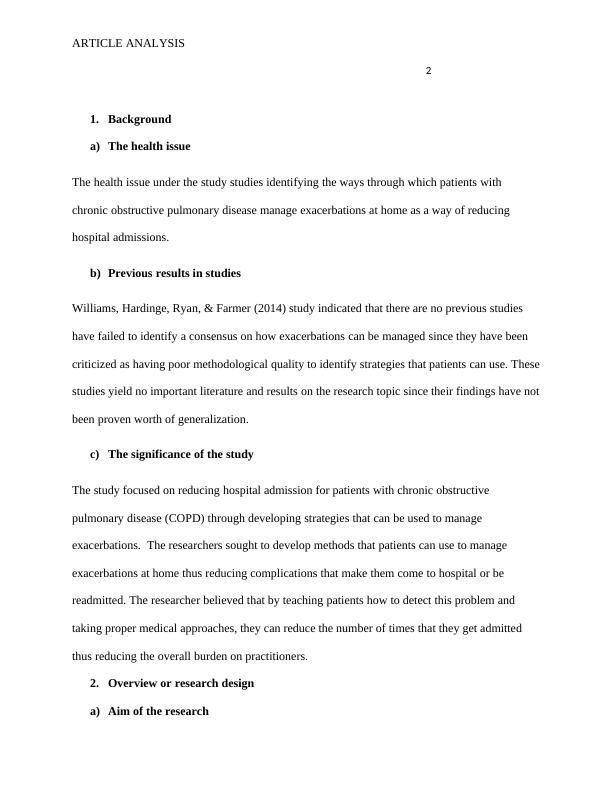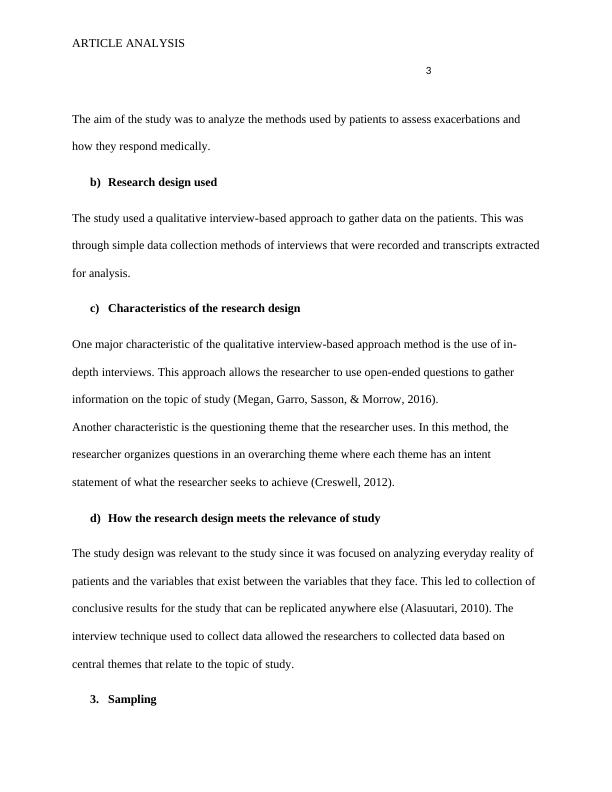Chronic Obstructive Pulmonary Disease - PDF
Added on 2021-06-17
10 Pages2118 Words34 Views
End of preview
Want to access all the pages? Upload your documents or become a member.
Patients’ experience of identifying and managing exacerbations in COPD: a qualitative study
|8
|2194
|457
Patients’ experience of identifying and managing exacerbations in COPD: a qualitative study
|8
|2066
|90
Patients’ experience of identifying and managing exacerbations in COPD: a qualitative study
|8
|2051
|495
Patients’ experience of identifying and managing exacerbations in COPD: a qualitative study
|9
|2131
|269
Research for Nursing and Midwifery Assignment PDF
|10
|2222
|81
Qualitative Article Review Assignment
|8
|2071
|227



